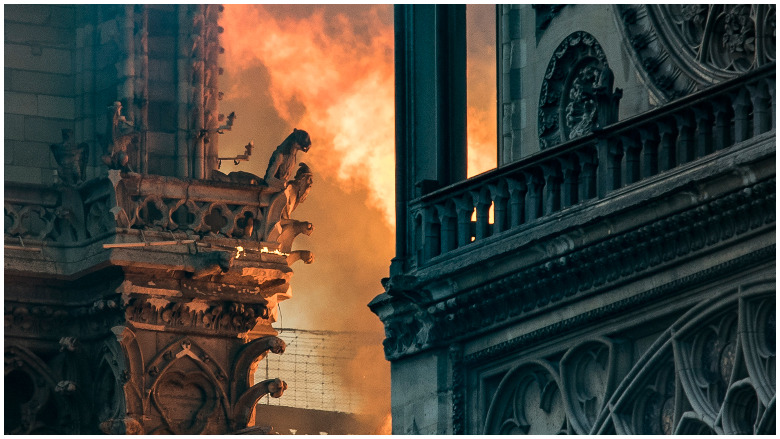
The gargoyles have a purpose: To protect Notre Dame. Many people have memories of the stone creatures perched menacingly on the Paris cathedral, and they’re worried about the statues in the wake of the fire that partially destroyed the Christian landmark.
The fate of Notre Dame’s famous gargoyles and chimeras was not certain in the immediate wake of the massive blaze. However, there was hope that at least some of the beloved stone creatures would survive unscathed since firefighters were ultimately able to save the building’s facade.
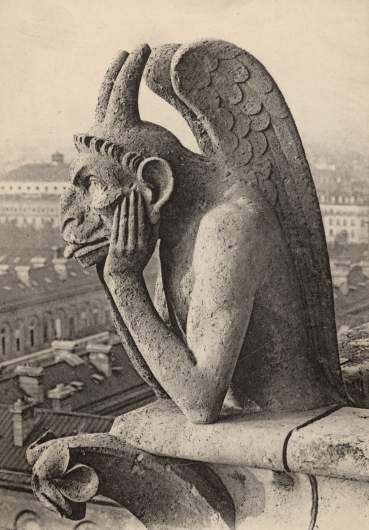
Getty‘The Vampire’, a chimere, similar to a gargoyle, on the cathedral of Notre Dame on the Ile de la Cite in central Paris.
You can see photos of some of the Notre Dame gargoyles throughout this article, as well as learn more about what they represent (it turns out they have quite a practical purpose). In an astonishing turn of events that devastated Parisians and those the world over, the blaze destroyed most of the cathedral’s roof and collapsed its spire. However, hundreds of firefighters were ultimately able to vanquish the flames, leaving the facade of the building intact.
“Two-thirds of the roof of Notre-Dame has been ravaged,” said General Jean-Claude Gallet, commander of the Brigade of firefighters in Paris, to reporters.
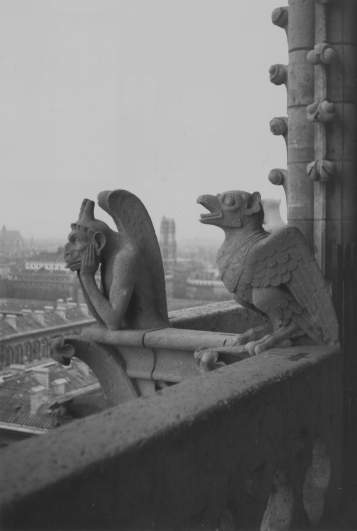
Gargoyles on the cathedral of Notre Dame on the Ile de la Cite in central Paris.
“Today, the gargoyles of Notre Dame weep,” wrote one man on Twitter.
The fire at the beloved landmark is now under control. The famous bell towers and religious relics like the crown of thorns were saved. The stunning rose stained-glass windows were also saved. On Twitter, though, some people worried about their favorite gargoyles. Victor Hugo’s classic novel The Hunchback of Notre-Dame, and the Disney film based on it, also helped popularize the creatures.
The gargoyles were already in peril. “The famous gargoyles of Notre-Dame, all carved in the nineteenth century, and which perform an essential role of projecting rainwater away from the building, have in many places been replaced with unsightly PVC tubes because the stonework was too corroded (and thus dangerous) to leave in place,” Notre Dame’s website reveals.
Here’s what you need to know:
The Gargoyles Have a Practical Purpose

This photograph taken on June 26, 2018, shows a distressed gargoyle of Notre Dame de Paris Cathedral in Paris.
The gargoyles aren’t just for show although the other small creatures adorning Notre Dame – the chimeras – are decorative only. According to The Daily Beast, there are hundreds of gargoyles at Notre-Dame, and, thus, some may survive the fire.
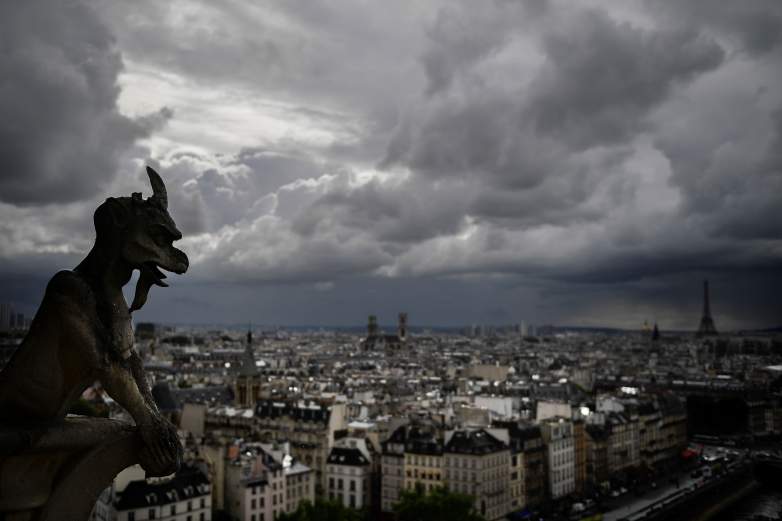
A picture taken on June 28, 2017 shows gargoyles on the roof of Notre-Dame cathedral in Paris.
According to Paris City Vision, the gargoyles’ main purpose is to help drain rain water off the roof of the cathedral, thus protecting it from stone damage.
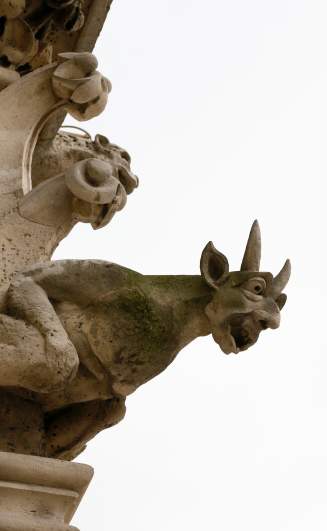
A view of a gargoyle on the side of the Notre-Dame de Paris cathedral, on November 30, 2012, in Paris.
The gargoyles, found on Medieval churches, are also meant to provide protection in another way. Their monstrosity is cast in the Catholic Church’s historic concept of good vs. evil. Their frightening appearance is supposed to scare away anyone who might imperil those inside. They are supposed to ward off evil, Daily Beast reports. Gargoyles take different forms; some have human faces. Others are animals. Some are mythical creatures. They are meant to be ugly and frightening.
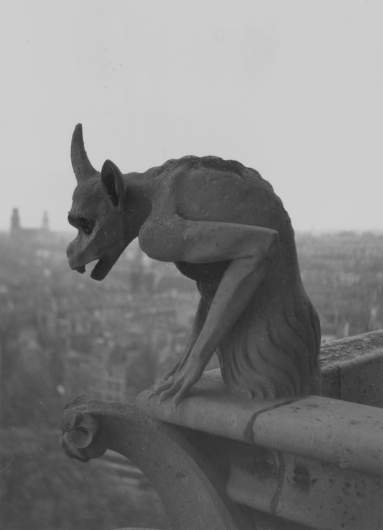
circa 1930: A Gargoyle on the cathedral of Notre Dame on the Ile de la Cite in central Paris.
According to BBC, the “Stryge” gargoyle is the most famous. It perches on top of the cathedral, “watching out over the city with its head in its hands.” Its fate is currently not known. Technically, Stryge is not a gargoyle, though, because he’s just a statue without the ability to serve as a water spout.

A fire fighter is seen dousing the facade of the Notre-Dame de Paris Cathedral as flames engulf the roof of the cathedral on April 15, 2019, in the French capital Paris.
According to AESU, the word gargoyle is Latin for “gullet or drain,” and the water comes out of the creature’s mouth. The statue creatures are, thus, not all gargoyles because they don’t all serve as water spouts. They are, however, what is termed “grotesques.”
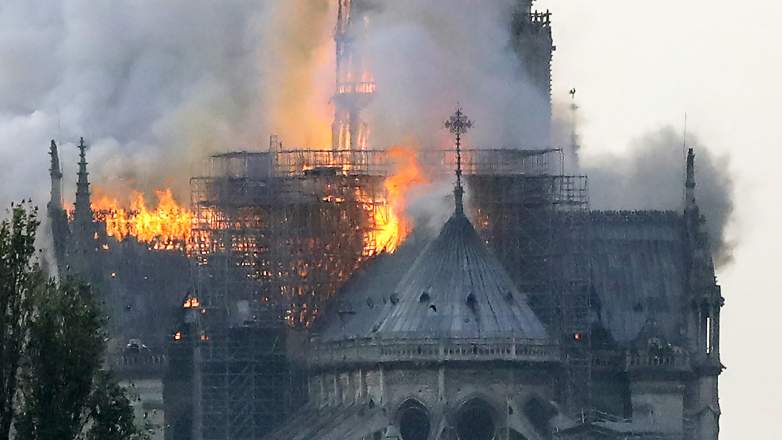
GettyNotre Dame fire
The gargoyle’s monstrous appearance is purposeful as is that of all of the grotesques; the Catholic Church “wanted to convey a realistic image of the possibility of a damned afterlife,” the site reports. The gargoyles were inspired by those on ancient temples in Egypt, Rome, and Greece, reports MyModernNet. According to that site, the Notre Dame creatures also drew inspiration from a 7th-century tale of Saint Romain and La Gargouille, “a fire-breathing monster whose head was nailed to a church to serve as a waterspout.”
On Twitter, word spread that gargoyles were removed before the fire for renovation. However, news reports before the blaze indicated that the 16 green-gray statutes removed were of the 12 Apostles and four evangelists. Thus, the world awaits the fate of the gargoyles of Notre Dame.

